
|
ECGbook.com Making Medical Education Free for All |
Upload ECG for Interpretation |

|
ECGbook.com Making Medical Education Free for All |
Upload ECG for Interpretation |

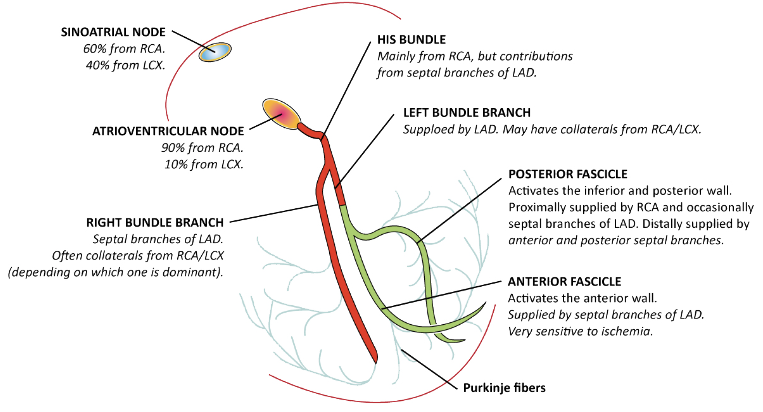
Blood Supply to the Conduction System
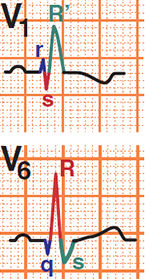
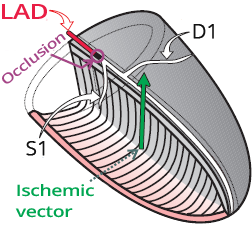



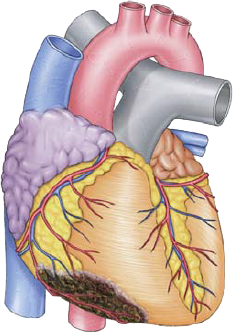
| Arrhythmia | Comment | Prognosis |
| Sinus Bradycardia |
Is the most common Occurs in 40% of inferior wall infarctions |
Is temporary (max. 7 days) |
| SA Node Dysfunction |
Is very rare Occurs in the subacute phase (hours - days) |
Often permanent |
| AV Block I. Degree |
Is common Occurs in the subacute phase (hours - days) |
Is temporary (max. 7 days) |
| AV Block II. Degree (Type I) |
Is common Occurs in the subacute phase (hours - days) |
Is temporary (max. 7 days) |
| AV Block II. Degree (Type II) |
Is rare However, often occurs in anterior infarction |
Is temporary (max. 7 days) |
| AV Block III. Degree |
Is rare Often develops progressively: AV block I. -> II. -> III. degree |
Is temporary (max. 7 days) |
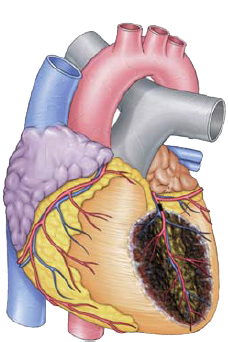
| Arrhythmia | Comment | Prognosis |
| AV Block II. Degree (Type II) | Often progresses to AV Block III. Degree | Often permanent |
| Bifascicular Block |
RBBB + LPH
|
Often permanent |
| AV Block III. Degree |
Often precedes
|
Often permanent |

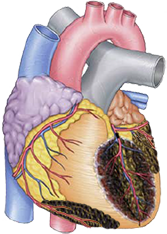
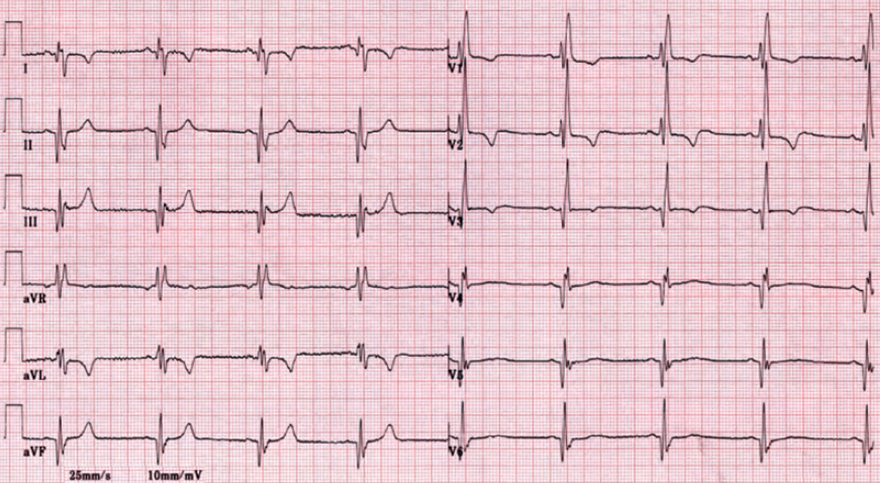
Right Bundle Branch Block and Old Infarction
Sources
Coronary Blood Supply
|

|

Blood Supply to the Conduction System
|


|
|
  
|
Arrhythmias in Inferior Wall Infarction
|

|
| Arrhythmia | Comment | Prognosis |
| Sinus Bradycardia |
Is the most common Occurs in 40% of inferior wall infarctions |
Is temporary (max. 7 days) |
| SA Node Dysfunction |
Is very rare Occurs in the subacute phase (hours - days) |
Often permanent |
| AV Block I. Degree |
Is common Occurs in the subacute phase (hours - days) |
Is temporary (max. 7 days) |
| AV Block II. Degree (Type I) |
Is common Occurs in the subacute phase (hours - days) |
Is temporary (max. 7 days) |
| AV Block II. Degree (Type II) |
Is rare However, often occurs in anterior infarction |
Is temporary (max. 7 days) |
| AV Block III. Degree |
Is rare Often develops progressively: AV block I. -> II. -> III. degree |
Is temporary (max. 7 days) |
Arrhythmias in Anterior STEMI
|

|
| Arrhythmia | Comment | Prognosis |
| AV Block II. Degree (Type II) | Often progresses to AV Block III. Degree | Often permanent |
| Bifascicular Block |
RBBB + LPH
|
Often permanent |
| AV Block III. Degree |
Often precedes
|
Often permanent |
Reperfusion and Arrhythmias in Myocardial Infarction
|

|

|
Right Bundle Branch Block and Old Infarction
|

|
Sources